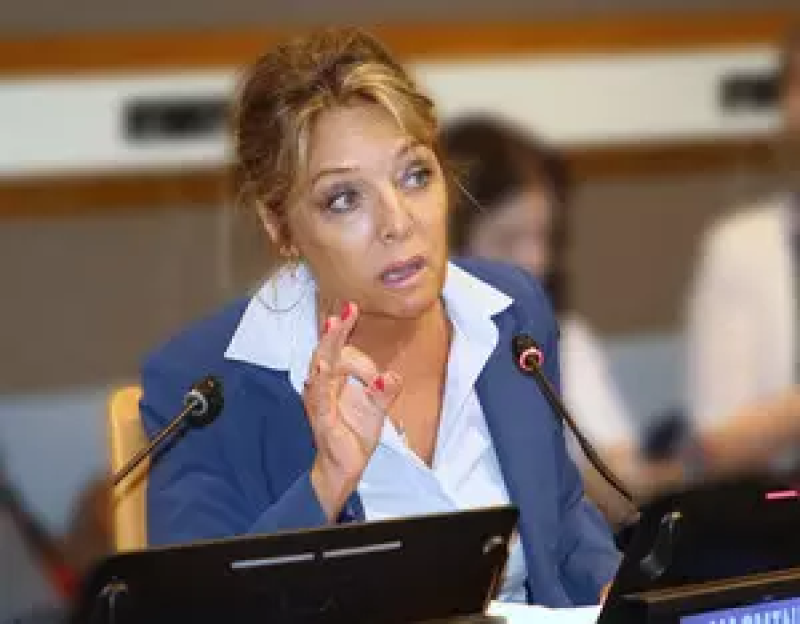- Another July warrier shot in head, critical in Khulna hospital |
- NCP Khulna Chief Critically Shot Amid Rising Political Violence |
- Indian MP Warns Bangladesh Faces Rising Lawlessness |
- Law and Order Must Be Ensured Ahead of Polls: Prof Yunus |
- Tough times ahead, everyone must remain united: Tarique Rahman |
Cultivating a Culture of Peace

Yasmine Sherif, Education cannot Wait.
By Yasmine Sherif
NEW YORK, Sep 21 2024 (IPS) - The longing for peace transcends time, geography and religion. Based on justice, human rights and universal values outlined in the UN Charter, a culture of peace brings us all together in our common agenda for humanity. We can only co-exist by aligning ourselves with such a world order.
On today’s International Day of Peace, we call on world leaders to end conflict and embrace a culture of peace as enshrined in the UN Charter and related international law.
As the UN General Assembly outlined in the Declaration and Programme of Action on a Culture of Peace a quarter of a century ago, this must include: “Respect for life, human rights and fundamental freedoms; the promotion of non-violence through education, dialogue and cooperation; commitment to peaceful settlement of conflicts; and adherence to freedom, justice, democracy, tolerance, solidarity, cooperation, pluralism, cultural diversity, dialogue and understanding at all levels of society and among nations.”
Educating for peace starts at home and continues in school through years of education. This takes place during the most formative years of a child learning about their identity, ethics, values, conscience, courage and compassion. Wherever there has been a failure in imparting on children the imperative for peace, the world is turned upside down. This is a global failure with no geographical boundaries.
Today, we live in a world of unprecedented violence, armed conflict and chaos. All the genuine and heartfelt commitments made in 1945 in the UN Charter seem to be fading away. Children and adolescents are the most vulnerable, the least protected, and the most impacted. They bear the brunt.
Global conflicts killed three times as many children in 2023 than in the previous year, according to the United Nations. The number of forcibly displaced people reached an unprecedented 120 million in May 2024.
“In 2023, the United Nations verified a record 32,990 grave violations against 22,557 children in 26 conflict zones, a 35% increase from the previous year,” according to recent analysis by the UN.
We can end these violations and invest in a constructive co-existence globally. We can use our resources for education, rather than for wars. In classrooms around the world, girls and boys who have withstood the wrath of war can rebuild their hopes and their lives. Cultivating a culture of peace is possible. The financial resources exist. The choice as to how we use them is ours.
IPS UN BureauNEW YORK, Sep 21 2024 (IPS) - The longing for peace transcends time, geography and religion. Based on justice, human rights and universal values outlined in the UN Charter, a culture of peace brings us all together in our common agenda for humanity. We can only co-exist by aligning ourselves with such a world order.
On today’s International Day of Peace, we call on world leaders to end conflict and embrace a culture of peace as enshrined in the UN Charter and related international law.
As the UN General Assembly outlined in the Declaration and Programme of Action on a Culture of Peace a quarter of a century ago, this must include: “Respect for life, human rights and fundamental freedoms; the promotion of non-violence through education, dialogue and cooperation; commitment to peaceful settlement of conflicts; and adherence to freedom, justice, democracy, tolerance, solidarity, cooperation, pluralism, cultural diversity, dialogue and understanding at all levels of society and among nations.”
Educating for peace starts at home and continues in school through years of education. This takes place during the most formative years of a child learning about their identity, ethics, values, conscience, courage and compassion. Wherever there has been a failure in imparting on children the imperative for peace, the world is turned upside down. This is a global failure with no geographical boundaries.
Today, we live in a world of unprecedented violence, armed conflict and chaos. All the genuine and heartfelt commitments made in 1945 in the UN Charter seem to be fading away. Children and adolescents are the most vulnerable, the least protected, and the most impacted. They bear the brunt.
Global conflicts killed three times as many children in 2023 than in the previous year, according to the United Nations. The number of forcibly displaced people reached an unprecedented 120 million in May 2024.
“In 2023, the United Nations verified a record 32,990 grave violations against 22,557 children in 26 conflict zones, a 35% increase from the previous year,” according to recent analysis by the UN.
We can end these violations and invest in a constructive co-existence globally. We can use our resources for education, rather than for wars. In classrooms around the world, girls and boys who have withstood the wrath of war can rebuild their hopes and their lives. Cultivating a culture of peace is possible. The financial resources exist. The choice as to how we use them is ours.
IPS UN Bureau

